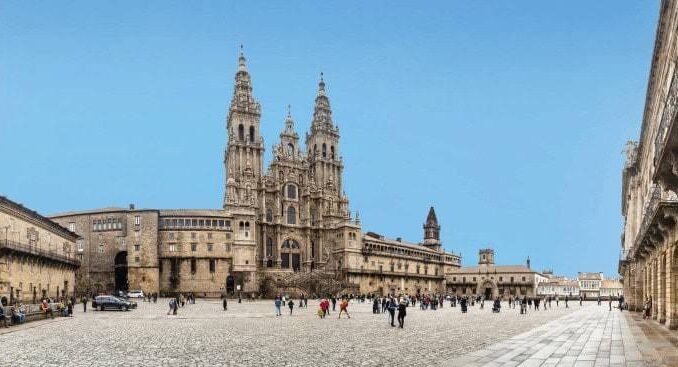
Santiago de Compostela, a Unesco World Heritage site, has been primarily recognized for the past 1,200 years as a place of pilgrimage for pious Catholics. Nearly 500,000 devoted hikers embarked on the well-traveled “the Camino” last year alone, traversing the verdant hills and river-dotted valleys of Galicia in northwest Spain to arrive at the city’s imposing Romanesque cathedral.
Friends and other travelers who had seen Santiago’s soaring church spires and winding, honey-colored alleyways had told me about its splendor for years. However, a lot of people who had walked for weeks or even months acknowledged that after they got there, they walked with the crowds into the cathedral to see St. James’s tomb, sank into one of the many touristy tapas bars near Rua Franco, and then hurried home. I had always wondered if they would have found more if they had just taken a few more steps.
I didn’t have the time or energy to walk the strenuous trail personally, but I wanted to learn more about the city’s medieval and more contemporary core. Thankfully, a high-speed rail line now connects travelers to Santiago across the country, providing a blister-free means of seeing one of Spain’s most beautiful—and little-visited—cities.
The fast track Though Spain boasts Europe’s longest and most-advanced high-speed train network (second in the world only to China’s), it wasn’t until December 2021 that the nation extended its three-decade-old high-speed Alta Velocidad Española (AVE) network to Santiago. “We’re in an isolated corner of Spain,” Ana Munín, from the Santiago de Compostela Convention Bureau, tells me. “We get things last.” Stepping onto the platform at Madrid’s Chamartin station, the white flanks of my streamlined AVE train were adorned with proclamations of its top speed (330km/h) plus a logo indicating that it was powered by 100% renewable energy. According to Munín, the arrival of these high-speed trains has brought an increase of Spanish travellers to Santiago, while simultaneously reducing the number of flights arriving at its small regional airport. “A one-hour flight – it is just wrong,” she remarks. As my train leaves Madrid, I watch the seat-back speedometer rise inexorably until, after 20 minutes, I’m cruising serenely along at 300km/h. Arid plains dotted with weathered ochre-coloured villages and clusters of hardy trees scrolls by. Passing the city of Zamora, moorland gives way to sylvan valleys where mountain streams glint below the tracks.
The train eases across the wide span of the Miño, Galicia’s longest river, as we reach the ancient hot springs town of Ourense. From here, a series of viaducts carry us across hills carpeted by a tight arboreal tapestry, dotted with colourful villages whose facades seem brighter in the clear hill air. Barely more than three hours after leaving Madrid, I step off the train into the heart of Santiago.

Be the first to comment